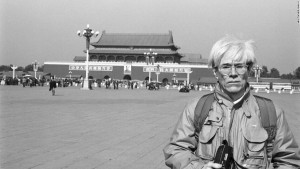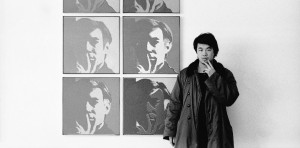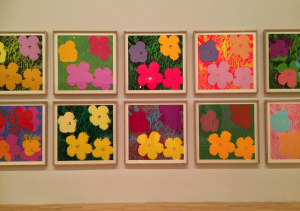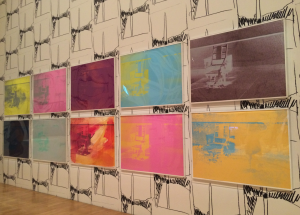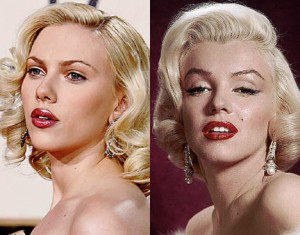- Celebration
- Adjustment
- Imitation
- Revisions
- Colonization
- Deconstruction
- Analogue
- Parody/Pastiche
- Secondary adaptation
- Allusion
Month: March 2016
Photography- The Gestalt Principles
In week 3 studios, James elaborate a lot about filmic photography and the Gestalt Principles. This creative device is crucial to create dynamic visual composition, hook the viewers and impart implicitly emotion and logic. These principles include an arrangement of parts altogether as a whole is greater, with each part has meaning on its own as Koffka mentioned. He also explained that the whole is not necessarily made up by the sum of the parts, where actually it is different.
Figure/ Ground
The object and its surroundings, with figure begin the object or subject while the ground is the setting or pretty much the background/foreground/mid-ground.
Closure
With closure principle, the viewers fill the gap; where our brain does the work to interpret meanings.
Continuance
When the eyes follows around within the frame yet also outside of the frame. This can be generated through the use of especially leading lines, directional repetition and lighting.
The law of common fate
Where two or more subjects share or oppose common situation or fate.
Similarity
There are similarities or pattern among images like colours, forms, etc. In this photo it is that every man as similar subjects concerned about the injured subject except for the woman smiling and the only different subject who stands out. She will be the anomaly of this image.
Proximity
Something off put together as a subject.
China-US Adaptations
Finally, I’ve made it to one of my favourite artists’ exhibition. Andy Warhol has been a long time inspiration to some of my artworks. I didn’t know much about Ai Wei Wei before, but these two guys clearly have some strong bond and connection among their artworks and identity. Both share common interest to comment on political issues, popular culture, and actually has visited each other’s residence. Andy Warhol has been in a Capitalist country, being born in America and therefore has been brought up with the free-spirited ideologies he has evidently produced in his works. On the other hand, Ai Weiwei being brought up in a Communist China made him an activist who has long inspired by Warhol’s “voice” in his works. Across their works, there is a dense number of similarities such as the use of repetition to imply mass productions, bold colours as pop aesthetics, similar drawings/sketches and etc. It is as if Ai Weiwei is an “adaptation” of Warhol just in a few decades. So I would also say that Ai WeiWei’s works are an imitation from those pop style of Andy Warhol.
Using Pop, Bold, Surrealistic colours:
Everywhere in our surroundings, there has to be an adaptation of the popular culture into at least one form of text. Textual crossing and adaptation does not have to be adjusted from a text into another form of medium, where text can also be adapted from cultural artefact. Needless to say, can we acknowledge that Marylin Monroe’s fashion style is adapted into the styles of celebrities we may see today? For instance, in Scarlett Johansson.
The grid
This is a clever way to frame shots.
The role of themes
What are themes? a categorised idea? They do make statements that generate different reactions to the audience as well as the authors yet have the ability to teach them about each theme. From the readings… I’ve realised that some themes expresses a value, say of love, family and etc. and take a side on an issue. It is in fact a product of story elements, emerging from combinations of those elements, like the principle of art when a colour is the elements of art. We can say that red tones and colours as the elements gives a sense of love and passion themes. So basically, storytelling can be described as theme-telling.
But where do they come from? According to the reading, it is evident from our own experiences and explorations of feelings. Have you heard anyone said “everyone’s an artist”? But are all of us really? So what makes us an artists? I’ve found that everybody has humanely qualities but artists are the ones driven to “investigate, arrange and organise them”. They are the ones who has curiosity and the urge to understand needs, wants, feelings, life… and that is how and where we find theme. It does depends on ourselves and our values.
This notions of finding themes to know my own identity encourages me to a further self-discovery in order to make films. The process in which I can learn this notion is practice, keep creating, putting down ideas into screenplay because “storytelling is a process of self-discovery”. This is why auteurs like Scorsese, Spielberg, Burton and many other great filmmakers each have constant themes within their films. An example of this is Scorsese’s constant use of comedic elements to share ideas about guilt, faith or manhood as it is presented in gangster films Goodfellas and The Wolf of Wall Street.
https://equella.rmit.edu.au/rmit/file/0efcc57c-cc65-5cf6-4d62-67229e1e4f9c/1/31259008892189.pdf
http://blogs.indiewire.com/theplaylist/retrospective-the-films-of-martin-scorsese-20131217
From Painting to Film
David Lynch, one of the two most inspiring directors I have encountered in “Finding the Ear” studio so far, started off as a painter whose painting had a blown feather stuck on it and moves. Then he wanted to make his painting “move”. Like Christopher Nolan, he has a sense of ambiguity, abstract and non-linear style among his films which is why I’m interested in his works, just because I am into ambiguity myself. David Lynch’s The Alphabet struck me with an inspiring way to portray nightmares. I’ve learned that he is able to both comply harsh reality combined with loving innocents in a marvellous way in his films such as Blue Velvet. Similarly in his short, The Alphabet, He incorporated an innocent girl with a childlike-heart with a harsh, disturbing dark nightmare. Abstractly complemented with blood, monsters in various shapes and scary form of subjects shot in german expressionist style of chiaroscuro lighting and costume, Lynch provides a mash of these horror aesthetics with a likeable little girl character who sings herself the alphabet to get over a nightmare disturbance. This has truly inspires me in which there is an art in mash-up of two or more completely opposing idea/concept.
Lynch’s sense of making a painting move has motivated me to appreciate both visual art and moving image at the same time. I have always liked painting but did not actually try to see paintings and moving image as something that could be combined. I wonder as I’ve taken a framing studio course, if frames, drawings, and films are one type of artistry in a different form just as abstract yet another form of painting. But what about the audio that incorporates films? Can sounds exist within a painting, as if audience can really hear a painting? or do they always hear ‘silence’ as the sound that exist in paintings? Maybe even an imagined sound can be considered as a living component of an artwork.
https://equella.rmit.edu.au/rmit/file/c172f46c-300d-4235-b285-f8130d55854d/1/160225_3_005.pdf
The art of self expression
Upon reading Michael Rabiger’s ‘You and the creative process‘, I came across the notion of self-discovery through constant production of your own passion. I, as a media practitioner still have no idea of what my own personal style, theme or identity presented among my films/artworks, in which why I am so interested in Rabiger’s article. I’ve learned that this self-exploration is indeed messy, slow and probably will never end. But we have to be willing to take chances yet courageous to trust and show who we are to the people around us just as he said “You cannot excel as an artist and stay in hiding”. Thus, it got me thinking and lead me to be a risk taker in order the become fully alive.
To express yourself is to master the art of non-conformity. Chris Guillebeau in his book discusses about creating your own ideal world. I understood that listening to your own thoughts and actually making them alive creates an inspiration. In Lynne Ramsey’s Small Deaths she expresses her true self of impressionistic creativity through her unique, unattached use of non-diegetic audio. She also cleverly conveyed a beautiful imperfection and rather broken cut editing such as jammed cutting shots repeated throughout parts of her film. This to me is a wonderful self-expression/discovery of the beauty in every individual’s imperfections. To her, the characters, visual and the audio aspects of a film is very important. Hence the details in cuts, unattached sounds, etc are little but powerful components. This way, Lynne Ramsey did push the boundaries of her comfort zone and took these risks.
Is art the same is therapy? Well, I’ve always thought whenever I have conflict emotionally, making art would help. Always thought that it is my own therapy and medicine to keep me satisfied with living. Apparently that’s not truly the case. The text states that if we do really need therapy to survive, it must be self-directed and art is not about self-direction, rather a creation that is meant to explore mysteries of human existence.
http://www.festival-cannes.com/en/theDailyArticle/60303.html
Guillebeau, C 2010, The Art of Non-Conformity, publish Penguin Group, edn. 1, New York.
Nolan’s “what in the world?”
First week in “Finding the Ear”
Our first week in this studio focuses on obviously, introduction. We did watch some clips from three widely-recognised filmmakers though; Martin Scorsese, Wes Anderson and Christopher Nolan. What most interests me is Christopher Nolan’s distinct and unique style across his films. Especially an analytical research on Nolan’s pattern of styles and filmic conventions across his different films. Nolan’s imagination of high concept within his films has been not only creating an idea outside the box, but it is like Nolan has also create his own circle somewhere in a space outside the box. This is like what is shown with the man killing his little self and in turn killed by a bigger self of him, in which can represents the idea of karma. I have learned that he consistently portray the sense of uncomfortable time passing through the use of clock ticking. Most of his characters has some kind of psychological instability or rather obsessive, as seen here in his short Doodlebug.
Another aspect I have noticed across his films are that he often present subjects within a subject as it is presented in Inception with the idea of dream within a dream. Similarly, Doodlebug with the character in a parallel world meeting himself in smaller size (and bigger). His usual film attributes chiaroscuro lighting, dark messages, slow camera movements and disturbing subjects (actors, setting, etc.) all determines film noir kind of filmic aesthetics. We can say that Nolan has mashed up different ideas and characteristics of film conventions combining them repeatedly to identify his own sense of auteur style. Thus, this leads me to encourage myself to find my own “voice” as a media practitioner, finding what I value and what my purpose is with my own style. Possibly in the future though, I am interested in different audience reactions to certain styles directors have communicated. This is because probably I do value the audience reactions as I communicate my ideas through films.
https://www.youtube.com/watch?v=-WhKt_CkXD0
http://www.imdb.com/title/tt0411302/reviews
Back to “life”, back to inspirations
This is my life now. Getting up for the purpose to do what you’re supposed to have passion for, which turns out to be such a pain. University. Media and Communication courses. Nevertheless, like other average person out there, we go to university because we’re supposed to, not because we want to learn. But to take authority in doing what we are supposed to in order to do what we want is cruical to my ritual as a media practitioner.
Having been enrolled in “Finding the Ear” studio is such a luck for me. I wanted to study the cinema and the filming bodyworks and its industry. So the first week of my second year was familiar. It is like being a new uni student in each course, but not really because you have already done this before. I guess I’ll just have to get used to it and see what happens as another year will pass like it did in a blink. But summer was awesome! Being in Bali while rushing to catch up on all the Oscars nominated films before the ceremony is like the heaven version of studying media. No such thing as official assignment. Period. But let’s be honest here, we’re not supposed to do this but we can’t help it anyway. Movie piracy is BIG in Bali, Indonesia. Even if you can avoid it, some movies aren’t even distributed it local cinemas, making us having to buy these movies to watch it anyway.
But during this holiday I have finally got to watch Room by an inspiring director, Lenny Abrahamson to create such a unique drama/thriller film. It is an adaptation of a book of the same name by Emma Donoghue. It is a film about a captive held in an enclosed and isolated room for seven years, being a victim of abduction. She was pregnant then and had a seven year old son never seeing the world outside and finally escaped to see it for the first time. What got me interested in this film is that despite its genre, the film is portrayed mostly in the child’s point of view and presented in his childish voice over as he narrates his perceptions. The film became a unique up-lifting presentation of the harsh-reality of thrilling world.
Another great film that had opened my eyes over the holidays is The Danish Girl, director by Tom Hooper. The film that made me cry after The Notebook (2004). Just because it reminded me of Caitlyn Jenner. It also got me thinking, is gender the same is sexuality?
Studio Exhibition
In our week 10 to 11 studios, we were focusing on how our studio presentation will be delivered. When put into groups to brainstorm some of these answers, I have found so many similar interests and results experienced by my colleagues let alone inspire each other. Then the whole studio contributed in a single, shipwreck of a G-doc to answer these three questions that some of us cannot, for the first fifteen minutes of the studio, write anything on.
What is the studio investigating/exploring? How did it do this?
The studio has explored enlightening theories from past/historical thinkers and practitioners. By introducing these academics through readings, we are able to investigate a wide range of international knowledge from different directors, filmmakers and other media experts or founders. Furthermore, inspirational screened films in this studio implements significant exploitation that challenges previous restrictions and limitation. These new findings involves the use of mobile camera, IMAX 3D cinema inspired by Lumiere Brothers, media materialism, a mending of action genre in Nicolas Winding Refn’s Drive and thinking outside the box. Like what Jafar Panahi did with his This Is Not A Film, he ‘told’ his film instead of showing it due to the restrictions he experienced as an ex-director by the government. The studio has also explored time and space as part of framing, that both of these elements can be manipulated. It further examines cinematic theories and the projection on the frames through technical use of cameras. Within the frames, there are communications thus, a relationship between the audience, the filmmakers, and also the cinema itself. Finally, “framing is a position of thinking” is the main topic generalised across ‘On The Frame’ studio.
What did you discover in terms of your current/future professional practice?
I discovered that as the studio runs, I am able to differentiate between framing and storytelling although both are closely related. It is because we are positioned to focus more on the visual framing rather than narrative contents or components of the cinema. By attending this studio, I have obtained the knowledge of framing our perceptions and discover the idea of camera as part of human body through the readings and experimental projects. What I will be taking out of this course for my future profession as a media practitioner is a greater knowledge of cinematic framing and development of aesthetics within the frame. Having seen and actually experienced the films of a variety of directors, my understanding of their films and framing techniques has continued to inspire me towards future filmmaking practices. I would also continue to expand my studies on cinematography for framing as what I have experienced in this course serves as a grounding base for my cinematic practice.
What about this studio would you recommend to potential future students?
Basically I would recommend the free-will that we have to the potential future students. The free to “think” and “do” things that we are interested in for our own projects and experimentations are the most important self-triggers of being a media practitioners. I insists on attending the studio’s screenings, especially to experience ‘hardcore’, mind-blowing films like Mad Max that were screened in class. To further endorse future students, what about the studio that most interest me is that we are then able to see the shift of the cinema from its primitive states untill what is contemporary cinema today as well as where cinema may or may not be headed. Learning this cinematic timeline across its histories does contributes to any student’s deeper understanding of how cinema came to be.










